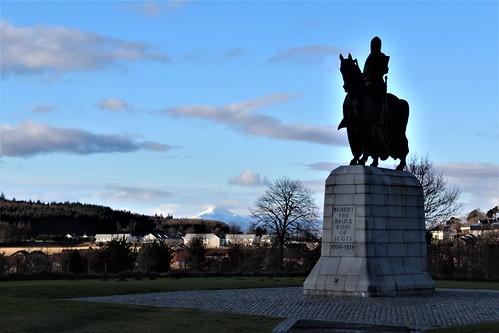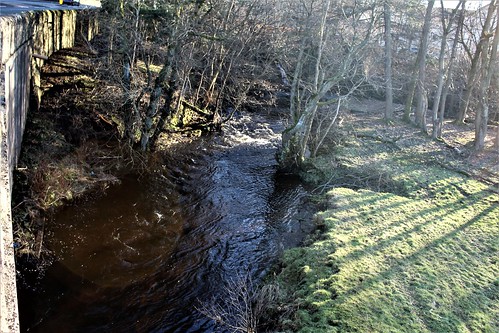Battle of Bannockburn, 1314
(Above image is a capture of the Statue of King Robert the Bruce at the Bannockburn Visitor Centre)
© Nigel P Cole/Catswhiskerstours Limited
This evening, I am posting information on the Battle of Bannockburn which took place over two days in 1314.Historically, Scotland was a violent country with no less than fifteen major battles occurring between 1297 and 1746. Principal adversary was the English either directly (e.g. Wars of Independence) or indirectly (e.g. Jacobite uprisings). Many more conflicts occurred as a consequence of clan battles and much further back in time to the Romans and the Picts.
The village of Bannockburn lies about five miles directly south of Stirling Castle which itself ranks as one of Scotland's top visitor attractions. The battle which took place here resulted in victory by the Scots and secured Scotland's independence for the ensuing four hundred years, until political union with England occurred in 1707 via a peaceful transition.
Despite the defining nature of the battle at Bannockburn the precise location of the conflict is not known with certainty. There is a visitor (heritage) centre with the usual array of information, merchandise and other facilities but this is,essentially, a proxy site.
The Battle
Over two days in June 1314 around 20,000 English troops led by King Edward II engaged in a battle with around 10,000 Scots led by Robert the Bruce. The exact location of the battle is unknown but modern historians agree that the decisive second day of fighting centred around the Balquhidderock Wood. At dawn on June 24th Robert the Bruce led his troops out of the wood before the English troops, exhausted from their long march north and the previous day’s fighting, had a chance to assemble for battle. In the coming hours the Scots destroyed a large proportion of the English force leaving the survivors to flee the battlefield.
Background
Since the Norman conquest of England in 1066 the kings of England ran various campaigns and initiatives to make Scotland subservient to English over-lordship with mixed success. It is noteworthy that the two key battles occurred within a few miles of Stirling Castle because this was the ‘buckle in the belt’ of Scotland. To secure Scotland an invading army from England had to cross the plain in central Scotland which Stirling Castle dominates. In 1297 William Wallace (aka ‘Braveheart’ ) had a success against the English at nearby Stirling Bridge but this proved something of a Pyrrhic victory because Wallace was subsequently betrayed and executed in London.
More Information
For those with an interest in etymology, ‘burn’ is a Scots word for stream or small river whilst ‘bannock’ is derived from bannog which is thought to refer to the hilly area above the Carron valley which is drained by the burn. Bannockburn is a village whilst Bannock Burn is the stream after which the village is named.
The Bannock Burn (stream) can be seen today by walking about half a mile along the Glasgow Road from the Heritage Centre in a southerly direction.
At the time of the battle the local landscape would have been rough, wet and boggy, a far cry from the well-drained pastures and field systems evident in the images shown herein.
Information Board at Stirling Castle
Bannockburn landscape today.





Comments
Post a Comment